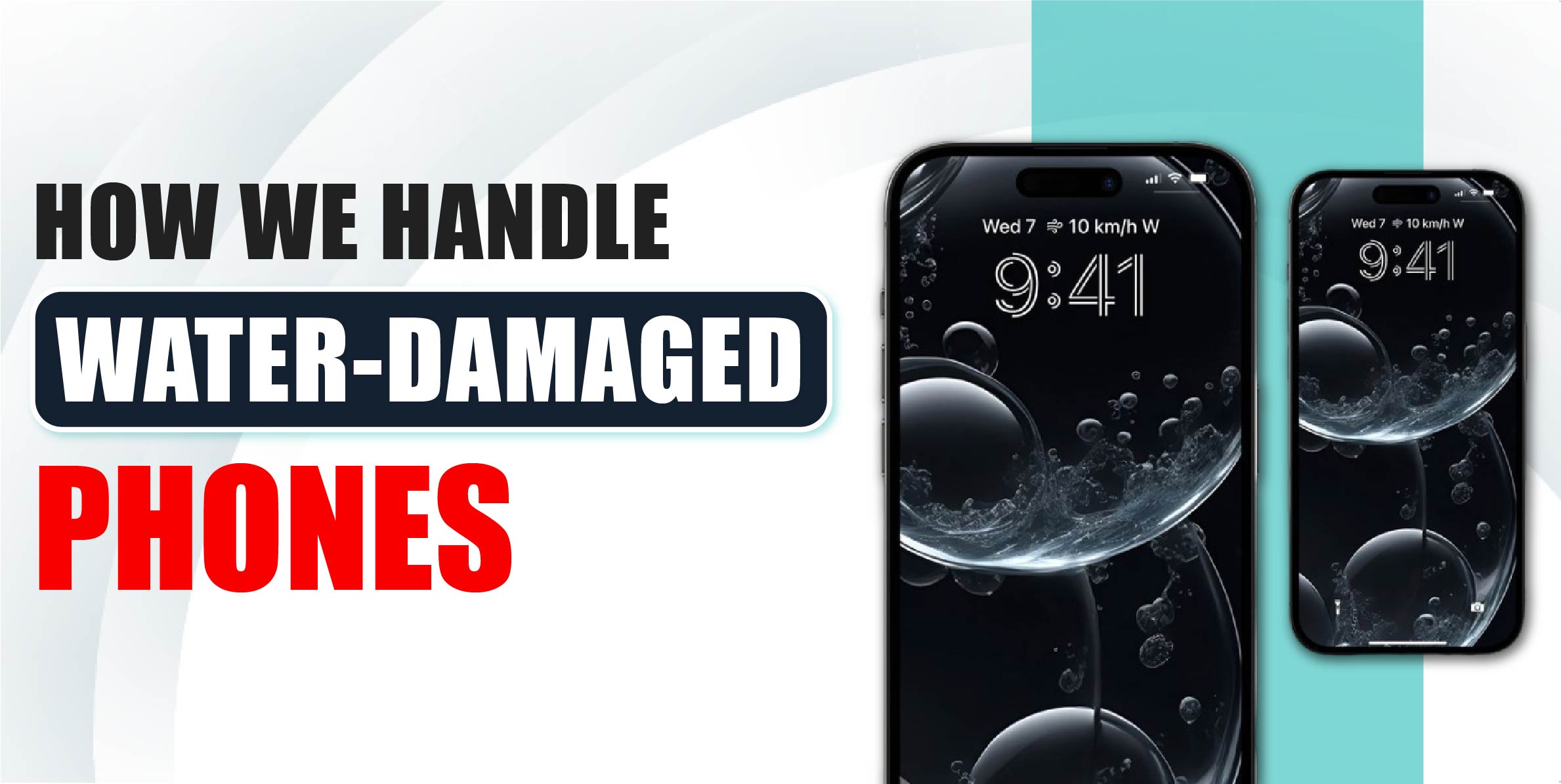
Water damage to phones is a common issue that can cause significant distress for users. Whether it’s due to accidental spills, submersions, or exposure to high humidity, water damage can impair a phone's functionality and lead to costly repairs.
At our TechCity service center, we follow a detailed and systematic approach to handle water-damaged phones, ensuring that we provide the best possible care and recovery options for your device.
1. Initial Assessment and Inspection
The first step in handling a water-damaged phone is a thorough assessment and inspection. When a phone arrives at our service center, our technicians start by examining the device to determine the extent of the water damage.
This involves checking for visible signs of corrosion or moisture within the phone’s interior. We carefully open the device, usually by removing screws and gently prying open the casing, to inspect internal components such as the motherboard, battery, and connectors.
During this inspection, we also assess the phone’s functionality, noting any immediate issues such as screen malfunction, unresponsive buttons, or irregular behavior. This initial assessment helps us understand the scope of the damage and plan the appropriate course of action.
2. Immediate Disassembly and Drying
Once the initial assessment is complete, we proceed with the disassembly of the phone. Removing the battery, SIM card, and other removable components is crucial to prevent further damage.
We then carefully dry out the internal parts using specialized tools and techniques. Our technicians use a combination of compressed air, soft cloths, and drying agents to remove any remaining moisture from the phone’s interior.
In some cases, we employ a desiccant drying process. This involves placing the disassembled phone components in a container with desiccant materials that absorb moisture effectively. The phone is left in this controlled environment for a specified period to ensure thorough drying. This step is critical in preventing short circuits and further corrosion.
3. Cleaning and Corrosion Treatment
After the drying process, the next step is to clean and treat any corrosion that may have developed. Water can lead to rust and corrosion on metal components, which can hinder the phone’s performance. Our technicians use specialized cleaning solutions and tools to gently remove corrosion from critical components such as the motherboard and connectors.
We carefully inspect each component for signs of damage and use ultrasonic cleaning techniques if necessary. Ultrasonic cleaning involves using high-frequency sound waves to dislodge and remove contaminants from delicate electronic parts. This method ensures a thorough clean without causing additional damage.
4. Reassembly and Testing
Once the cleaning and corrosion treatment are complete, we proceed with reassembling the phone. Our technicians carefully put all the components back together, ensuring that each part is properly aligned and secured. After reassembly, we conduct a series of tests to check the phone’s functionality. This includes testing the screen, buttons, connectivity, and other features to ensure that everything is working correctly.
We also perform diagnostic tests to identify any potential issues that may not be immediately apparent. This helps us detect any residual problems that might affect the phone’s performance in the long run.
5. Customer Consultation and Repair Options
After completing the repair and testing process, we consult with the customer to discuss the findings and repair options. We provide a detailed report on the extent of the damage, the repairs performed, and any remaining issues that may need attention. If the phone requires additional repairs or component replacements, we inform the customer and provide a clear estimate of the costs involved.
We also offer advice on preventive measures to avoid future water damage. This may include recommendations for using protective cases, avoiding exposure to water, and seeking prompt professional help if a spill or exposure occurs.
6. Quality Assurance and Final Return
Before returning the repaired phone to the customer, we conduct a final quality assurance check. This involves re-verifying all functionalities and ensuring that the phone meets our quality standards. We also clean the exterior of the phone to remove any fingerprints or smudges, ensuring that it is returned in the best possible condition.
Once the quality check is complete, we securely package the phone and return it to the customer. We provide clear instructions on how to handle the phone and any additional care tips to maintain its functionality.
Conclusion
Handling water-damaged phones requires a meticulous and systematic approach to ensure the best possible outcome. By employing specialized techniques and tools, we strive to restore your phone to optimal functionality and provide expert advice on preventing future damage. Our goal is to offer reliable and efficient solutions for water-damaged phones, helping you get back to using your device with minimal disruption.